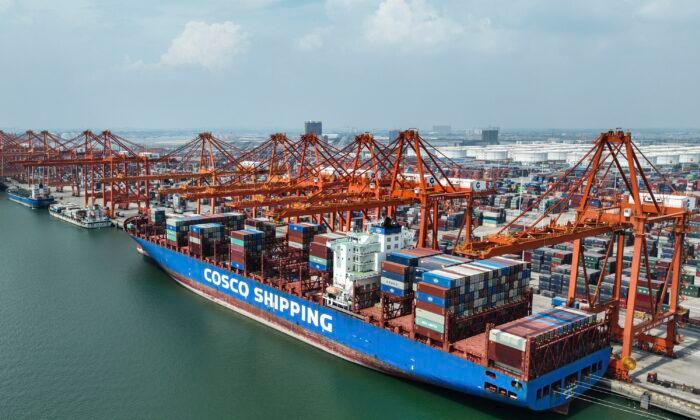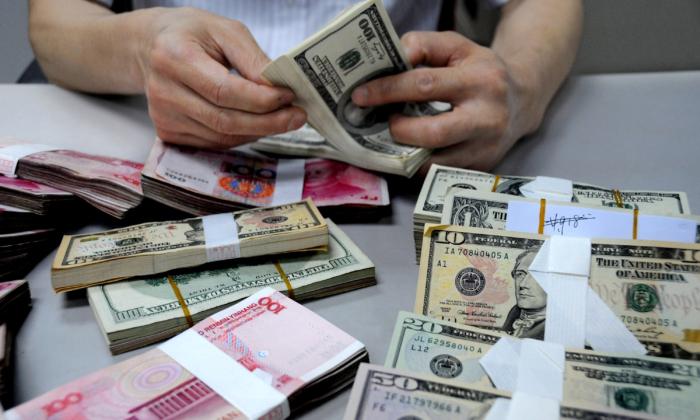China’s cumulative export growth in the first 11 months this year is about 30 percent of the same period last year.
In the first 11 months of this year, Chinese exports to the United States totaled $536 billion, exceeding $518.4 billion to the European Union (EU) and $515 billion to ASEAN countries, according to Chinese customs.
The numbers show that China’s year-on-year export growth in the first 11 months this year was only 9.1 percent, which pales in comparison to last year’s 30.7 percent in the same period.
Regarding the topic, Mike Sun, a U.S.-based investment consultant and expert on China issues, told The Epoch Times on Dec. 19 that lower U.S. consumption greatly impacts China’s exports.
Sun said, based on the available data, the Chinese export of textiles from Ningbo, Zhejiang, saw a significant decline. Some factories have paused their operation far ahead of the holiday season, while others have even been on “permanent holidays.”
In the past, the last two months of each year were the busiest season for garment and textile factories as they rushed to deliver orders and stock up inventory for the coming year.
However, according to the state-owned China Business Network, many garment and textile factories are “preparing for early holidays this year,” pausing operations as early as late November.
On Dec. 10, China’s Ministry of Commerce released the latest Shengze silk and chemical fiber index, a monthly indicator of the market sentiment in China’s textile industry. One of the sub-indices, the prosperity index, was 92.4, a 3.11 percent decrease from the index value on Nov. 10.
In the past few years, the highest recorded prosperity index was 132.75 in May 2018, and it was 108.53 in January 2020 at the start of the global pandemic. The prosperity index considers 15 aspects, such as purchase cost, total sales volume, product order, price, and inventory, based on data from over 300 merchants.
As inventories increase, demand for imports naturally falls.
Sun believes that “the prospect of China’s foreign trade exports is getting bleaker. On the one hand, the demand in the United States is declining. On the other hand, the manufacturing and orders are shifting to countries other than China.”
Exports are one of the main driving forces of China’s economic growth, and the decline in exports is bound to affect its foreign trade and the Chinese economy.
The Chinese state-run National People’s Congress magazine published an article in the 21st issue of 2019. It estimated that foreign trade, directly and indirectly, created about 180 million jobs in China, accounting for more than 20 percent of the country’s total employment.
According to the national economic data released by the Chinese statistics bureau on Dec. 15, the unemployment rate is rising for its main working-age group between the ages of 25 and 59. The decline also applies to workers from big cities and migrant laborers with agricultural household registration.
Among them, the measured unemployment rate in 31 major cities was a record 6.7 percent in November. The unemployment rate for young people aged 16–24 was 17.1 percent, significantly higher than in the same period last year.






